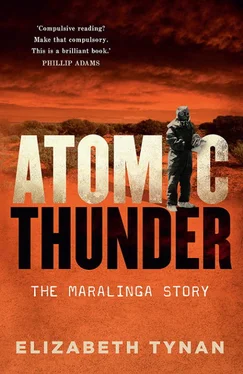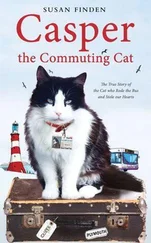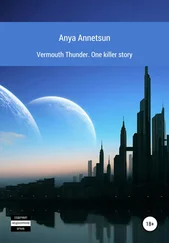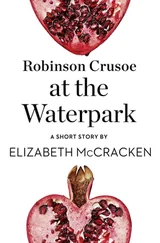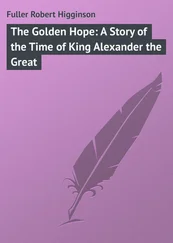The Australian Government did not approve Vixen B until 18 August 1960 and conveyed this to the UK high commissioner on 30 August. The Defence Department in particular was concerned about how little information was getting through, though it was concerned less about the safety arrangements than ‘the possibility of knowledge of the arrangements falling into wrong hands. It was a matter for political judgement how serious any embarrassment stemming from such knowledge might be’. When the Defence Department finally approved the tests, it included some new conditions for approval of future Maralinga tests: ‘The way was then clear for further discussions about some more formal channels of communication between Australia and the UK authorities in addition to the original AWTSC/AWRE channel’.
In the end, Titterton’s decision to keep the details of the series secret from his employers sidelined him. The departments of Supply and Defence eventually bypassed him altogether and went direct to the AWRE. The depths to which he had sunk in the estimation of the Defence Department and the Prime Minister’s Department was evident in a rather brief and uninformative letter written by the secretary of the Department of Supply John Knott. Titterton had written a lengthy letter to Knott on 24 August 1960 in which he set out the growing uneasiness he was hearing from both the Defence Department and the Prime Minister’s Department over Vixen B. Titterton was concerned about a view, particularly of Maurice Timbs from the Prime Minister’s Department, that the safety committee did not have enough information on the exact nature of Vixen B to properly assess its safety. ‘The [AWTSC] takes a most serious view of this: it reflects on our integrity and suggests that we agreed to trials without knowing whether they were safe or not.’ There was a veiled threat in Titterton’s letter: ‘We would feel it most improper for us to continue in our work unless we can be assured that we have the complete confidence of the Prime Minister’s Department, the Department of Defence and the Department of Supply’.
The letter prompted a lukewarm reply from Knott two days later, which said in part, ‘May I say at once… that you and your Committee have the full confidence of the Department of Supply and equally I feel sure would this be so [ sic ] in respect of all other Departments and officials concerned’. It appears that Supply was the only Australian department that came forwards with the requested vote of confidence. From the other two, there was silence.
The AWTSC was a belated and ineffectual attempt to give Australia some say in the ground-shaking events taking place on its own turf. The AWRE really became comfortable with the committee only when Titterton took over the chair in 1957. Before that, Leslie Martin had played as straight a bat as he could but scored virtually no runs. Under Titterton, the committee became a sham, giving the appearance of playing a serious role but in fact undermined from within by someone who had no intention of keeping the Australian Government properly informed. But if Australians as a whole were badly served by the safety committee, for one group in particular the British nuclear tests were profoundly devastating.
7
Indigenous people and the bomb tests
Long time ago, before whitefellas came, Anangu lived on their lands for thousands and thousands of years. The land was their life. They loved the land. They cared for the country. They knew all its secrets and they taught those secrets to their children and their children’s children, tjamu to tjamu (grandfather to grandson), kapali to kapali (grandmother to granddaughter).
Yalata and Oak Valley Communities with Christobel Mattingley,
Maralinga: The Anangu Story , 2009.
Whitefella sent us away. Whitefella came to this place and sent us away.
Tommy Queama from Ooldea, speaking through an interpreter at the Royal Commission, 1985.
In June 1956 the Department of Supply chief scientist Alan Butement wrote a furious letter to the controller of the Weapons Research Establishment, an Australian Government organisation based at Salisbury, near Adelaide, that ran the rocket range at Woomera. Department of Supply native patrol officer Walter Mac-Dougall had threatened to publicly disclose the potential harm to local Indigenous people after a weather station associated with the Maralinga test range was proposed at Giles. The controller, HJ Brown, set out MacDougall’s concerns in a memorandum. Butement responded, ‘Your memorandum discloses a lamentable lack of balance in Mr. McDougall’s outlook, in that he is apparently placing the affairs of natives above those of the British Commonwealth of Nations’. Justice James McClellend described this as ‘one of the most telling of all statements to come before the Royal Commission’. Maybe it was also telling that the chief scientist did not know how to spell MacDougall’s name.
McClelland found strongly against the British and Australian governments for their treatment of Aboriginal people, not just at Maralinga but also on the mainland adjacent to the Monte Bello Islands and at Emu Field. ‘If Aborigines were not injured or killed as a result of the explosions, this is a matter of luck rather than adequate organisation, management and resources allocated to ensuring safety.’ The damage done to the Indigenous populations was perhaps the most contested and tragic of all issues relating to the British nuclear tests in Australia. It was colonialism in microcosm and speeded up.
The murky status of Aboriginal people in Australia at the time was at least partly to blame. Aboriginal people did not have the federal vote, they were not counted in the census, and their affairs were not discussed in any depth in the Australian mainstream. They started to get the vote, state by state, from 1962. This makes somewhat fanciful Ernest Titterton’s comment to the Royal Commission that if the Aborigines in the area hadn’t liked the tests they could have voted the government out. Not until a referendum in 1967 were they included in the census. Shockingly, only a couple of generations ago, in some parts of Australia, Aborigines were administered under state flora and fauna Acts. The 1967 referendum also changed the Australian Constitution to enable the federal parliament to enact legislation on Aboriginal affairs. Before then, legislation concerning Aboriginal life was the domain of state governments.
The treatment of those affected by the atomic tests was not unusual. It was perhaps more unusual that a government employee, Walter MacDougall, was assigned to look after their interests, given the prevailing view at the time, namely that the kindest thing was to let them die out. They were practically invisible. Invisible people can be harmed with few consequences.
This attitude went right back to Operation Hurricane in 1952. In fact, it was doubtful that more than cursory consideration was given to Aboriginal safety when planning that hastily organised first British A-bomb test. The Royal Commission found that the authorities relied almost entirely on a document titled ‘Some Notes on North-West Australia’ prepared by the HER scientist ER Woodcock, whose main source was the Encyclopaedia Britannica . According to the Royal Commission report, Woodcock recorded a population of 715 people living within 240 kilometres of the Monte Bello test site, ‘excluding full-blooded Aboriginals, for whom no statistics are available’. Considerably more information was provided about the hens, ducks, cattle, horses and sheep in the vicinity. There was a paucity of information because Aboriginal people were not counted in the national census. Yet the Royal Commission found that the state government of Western Australia had better information at the time. This information specified that some 4538 Aboriginal people lived in regions on the mainland close to Monte Bello, hundreds in small townships, and the rest spread out at various missions, on cattle stations or in traditional family groups.
Читать дальше
